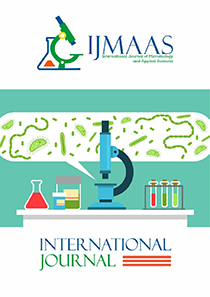Bacteriological and Physicochemical Qualities of Borehole and Well Water in Bundu Waterside, Port Harcourt
Vol 2, Issue 2, 2023
KEYWORDS
Drinking water sources, borehole, well, bacteriological, physico-chemistry, E. coli, Shigella sonnei
Abstract
Bacterial contamination of drinking water is a major public health problem worldwide because contaminated water can be an important vehicle of diarrheal diseases. This study was aimed at evaluating the bacteriological and physiochemical qualities of borehole and well water drinking sources. A total of forty eight (48) boreholes and wells water samples were collected from Bundu waterside, Port Harcourt between March – August, 2022 and analyzed using standard analytical procedures. Results showed that mean total heterotrophic bacterial counts for well water and Borehole water samples ranged from 1.30±0.13×106CFU/ml to1.73±0.05×106CFU/ml and from1.08±0.21×106CFU/ml to 1.40±0.11×106CFU/ml respectively. Total coliform counts (TCC) for well water and Borehole water ranged from 2.8±1.4×104CFU/ml to 4.8±0.5×104CFU/ml and from 2.1±1.0×103CFU/ml to 4.0±1.2×103CFU/ml respectively. Well water samples recorded higher counts compared to borehole water samples, though the counts obtained from the two water sources were higher than the acceptable limit 100CFU/ml of total heterotrophic bacterial counts and 0 CFU/100ml of total coliform, indicating high level of pollution of drinking water sources in Bundu waterside. Percentage occurrence of the bacteria isolated revealed that Escherichia coli ETEC (20%), recorded the highest percentage followed by Escherichia coli 9157:H7 (14%), Staphylococcus aureus (12%) Shigella sonnei (12%), Vibrio parahaemolyticus (12%), Salmonella enterica (8%), Pseudomonas aeruginosa (7%), Proteus mirabilis (6%), Enterobacter cloacae, and Vibrio cholera (4%). Results of physiochemical parameters of the water samples revealed that Electrical conductivity, Total dissolved solid, sulphate, phosphate and nitrate were above the permissible limit by WHO and Nigerian Standard for Drinking Water Quality while pH, Dissolved Oxygen, Biological Oxygen Demand, and Turbidity were below the permissible limit. Hence, bacteriological and physiochemical characteristics of the borehole and well water sources did not comply with standards which indicates that the water sources are not fit for consumption. Therefore treatment is recommended for the water sources before use for any domestic purposes.
Current: Vol. 4, Issue 1, 2025

Call for papers
The International Journal of Microbiology and Applied Sciences warmly welcome your valuable articles for publication.
